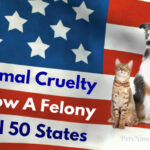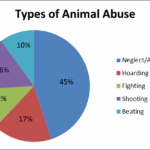The term “Big Lick” refers to a troubling practice within the horse show industry, particularly associated with the Tennessee Walking Horse. These events showcase horses that exhibit an exaggerated, high-stepping gait, known as the “Big Lick.” While many may regard these competitions as mere entertainment, the grim reality is that they often mask undercurrents of systemic animal cruelty. Understanding the mechanics of this practice is essential for comprehending its impact on the animal’s physical and emotional well-being.
At its core, Big Lick animal cruelty revolves around the manipulation of equine biomechanics. Trainers employ a variety of methods intended to enhance the horse’s gait, often leading to immense suffering. The most infamous technique involves the use of “action devices,” which are weighted shoes or hooves that exacerbate the natural movement of the horse. The result is a high-stepping motion that draws applause from spectators, but at what cost? These contraptions can cause severe damage to a horse’s limbs, leading to chronic pain and debilitating injuries.
Another detrimental practice associated with Big Lick shows is “soring.” This involves the application of painful chemicals or harmful devices to a horse’s legs to induce an exaggerated response during movement. The confines of this barbaric approach leave deep emotional scars, rendering once-vibrant animals into fearful, anxious beings. The psychological ramifications are enormous; horses become apprehensive and develop behavioral issues stemming from prolonged mistreatment. What may appear as an impressive display of athleticism is, in reality, a manifestation of pain, suffering, and the desperate attempts of a horse to escape an intolerable situation.
While the ethical implications cannot be overstated, the prevalence of Big Lick events continues to persist within certain circles. The allure of victory, prestige, and monetary rewards drives the desire to achieve unattainable perfection in equine performance. However, this ambition comes at an unbearable cost to those voiceless participants. Advocates argue that the horse industry needs to fundamentally reassess its values, prioritizing the welfare of horses over the fleeting glory of competition.
Government regulations aimed at curbing such practices have been introduced, yet enforcement remains lax, with many trainers circumventing rules designed to protect horses. In recent years, activists have persisted in raising awareness of Big Lick practices, pushing for reforms that will put an end to the suffering experienced by these animals. The call for stricter regulations, such as the PAST Act (Prevent All Soring Tactics), is more urgent than ever. By advocating for legislation that protects these animals, society can take significant steps toward dismantling the cruelty ingrained in this tradition.
Moreover, the culture surrounding Big Lick horse shows must undergo significant scrutiny. Many enthusiasts defend the practice by arguing it is a part of their heritage or a cherished tradition. However, traditions that endorse animal cruelty should be reevaluated. Societal progress often entails challenging long-held beliefs and confronting uncomfortable truths. By supporting the cessation of cruel practices, the community can pivot toward ethical alternatives that celebrate the beauty of the horse without sacrificing their welfare.
Alternatives to Big Lick shows exist that prioritize the horse’s wellbeing and showcase their natural beauty. Competitions that emphasize gentler training methods and promote humane standards are gaining traction. Many equestrians advocate for flat-shod shows, which allow horses to compete without artificial enhancements. These events celebrate the horse’s innate grace and skill, proving that it is possible to admire equine talent without resorting to cruelty.
Educational initiatives are essential in fostering a more empathetic approach towards animals. By informing potential horse owners and trainers about humane practices, the larger community can contribute to a culture characterized by compassion rather than exploitation. Workshops, seminars, and outreach programs can provide resources and knowledge, equipping individuals with the tools needed to advocate for animal welfare in the equestrian field.
Finally, it is crucial to acknowledge the role of spectators in perpetuating Big Lick cruelty. As long as audiences reward this spectacle with their applause and support, the cycle of abuse will continue. Individuals attending horse shows must educate themselves about the realities of what they are witnessing. By making informed choices about where to direct their support, consumers can drive change and signal to the industry that cruelty will no longer be tolerated.
The complexities of Big Lick animal cruelty unveil an unsettling truth about a segment of the horse industry often overlooked. It is vital to confront these practices head-on, imploring individuals to reevaluate their perceptions and expectations of equine performances. As societal awareness increases, so too does the opportunity for creating a more humane future for these majestic creatures. Only through collective action—advocacy, education, and dispelling myths—can we hope to abolish the dark side of horse shows and embrace an era that values compassion over tradition.




